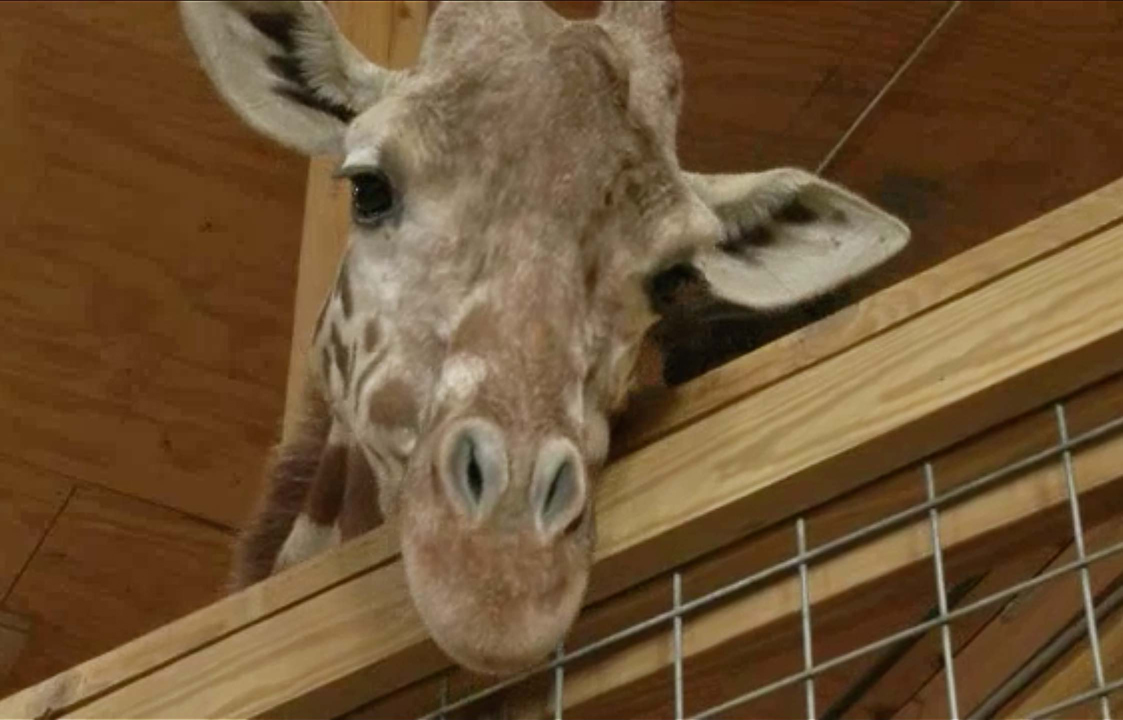What to Expect When Your Giraffe Is Expecting

April the very pregnant giraffe — and recent internet sensation — is preparing for her calf to arrive at Animal Adventure Park (AAP) in Harpursville, New York, and millions of viewers are tuning in to the park's live video feed to follow along.
Giraffes carry their young for 15 months, and April's caregivers initially estimated her birth range to be anywhere from mid-January to mid-February, based on observations of breeding behavior with her mate in mid-October, Jordan Patch, owner of AAP, told Live Science.
However, April might have conceived 17 days later, during what would have been her next fertile period; giraffes can conceive at any time of the year, Patch explained. In any case, the animal-park workers can tell that April is nearing the end of her current pregnancy, based on physical signs that include distended udders, waxy caps forming on her teats and noticeable swelling around her back end, Patch said. [Baby Watch! 'Giraffe Cam' Tracks Expectant Mother]
The 15-year-old April has already delivered three calves, though this will be the first for her mate Oliver, who is only 5 years old. It will also be the first giraffe calf to be born at the AAP.
Giraffes deliver their young while standing upright, and preliminary labor signs are very hard to detect. When April is ready to have her baby, the birth will likely happen very quickly — an adaptation that protects vulnerable giraffe mothers and newborns in the wild, Patch told Live Science.
The baby giraffe's front hooves will be the first part of its body to peek out into the world, followed shortly by its nose and head. Birth typically takes between 30 and 60 minutes, ending with the newborn dropping approximately 6 feet (2 meters) to the ground. The fall ruptures the amniotic sac so that the baby can start breathing on its own, Laurie Holloway, a spokesperson for the Dallas Zoo, told Live Science in 2011, after a Dallas Zoo giraffe named Katie delivered her calf.
About 5 to 20 minutes after being born, the newborn will wobble its way upright and take its first steps to nurse. Giraffe mothers' milk contains about 6 percent protein and 13 to 17 percent fat, which enables the calves to grow quickly, according to a study published in June 2004 in the Journal of Mammalogy.
Sign up for the Live Science daily newsletter now
Get the world’s most fascinating discoveries delivered straight to your inbox.
Baby giraffes usually start eating solid food when they are between 3 and 4 weeks old, though they will continue to nurse for nine months — and sometimes suckle for up to two years. Females can become pregnant again as soon as four months after giving birth and while still lactating, the study authors wrote.
Until the baby giraffe is weaned, it is raised entirely by its mother, and April will wean her calf "naturally," AAP representatives said in a video description on YouTube.
During an afternoon examination on March 5, April was "reportedly on edge," though her appetite was "notably good," her caregivers reported in a Facebook post. Active movement in her belly was visible, and she frequently lifted her tail. And by the next morning, her mood was "much better," AAP representatives wrote on Facebook.
We'll keep you updated as news on April's condition arrives.
Original article on Live Science.

Mindy Weisberger is an editor at Scholastic and a former Live Science channel editor and senior writer. She has reported on general science, covering climate change, paleontology, biology and space. Mindy studied film at Columbia University; prior to Live Science she produced, wrote and directed media for the American Museum of Natural History in New York City. Her videos about dinosaurs, astrophysics, biodiversity and evolution appear in museums and science centers worldwide, earning awards such as the CINE Golden Eagle and the Communicator Award of Excellence. Her writing has also appeared in Scientific American, The Washington Post and How It Works Magazine. Her book "Rise of the Zombie Bugs: The Surprising Science of Parasitic Mind Control" will be published in spring 2025 by Johns Hopkins University Press.









